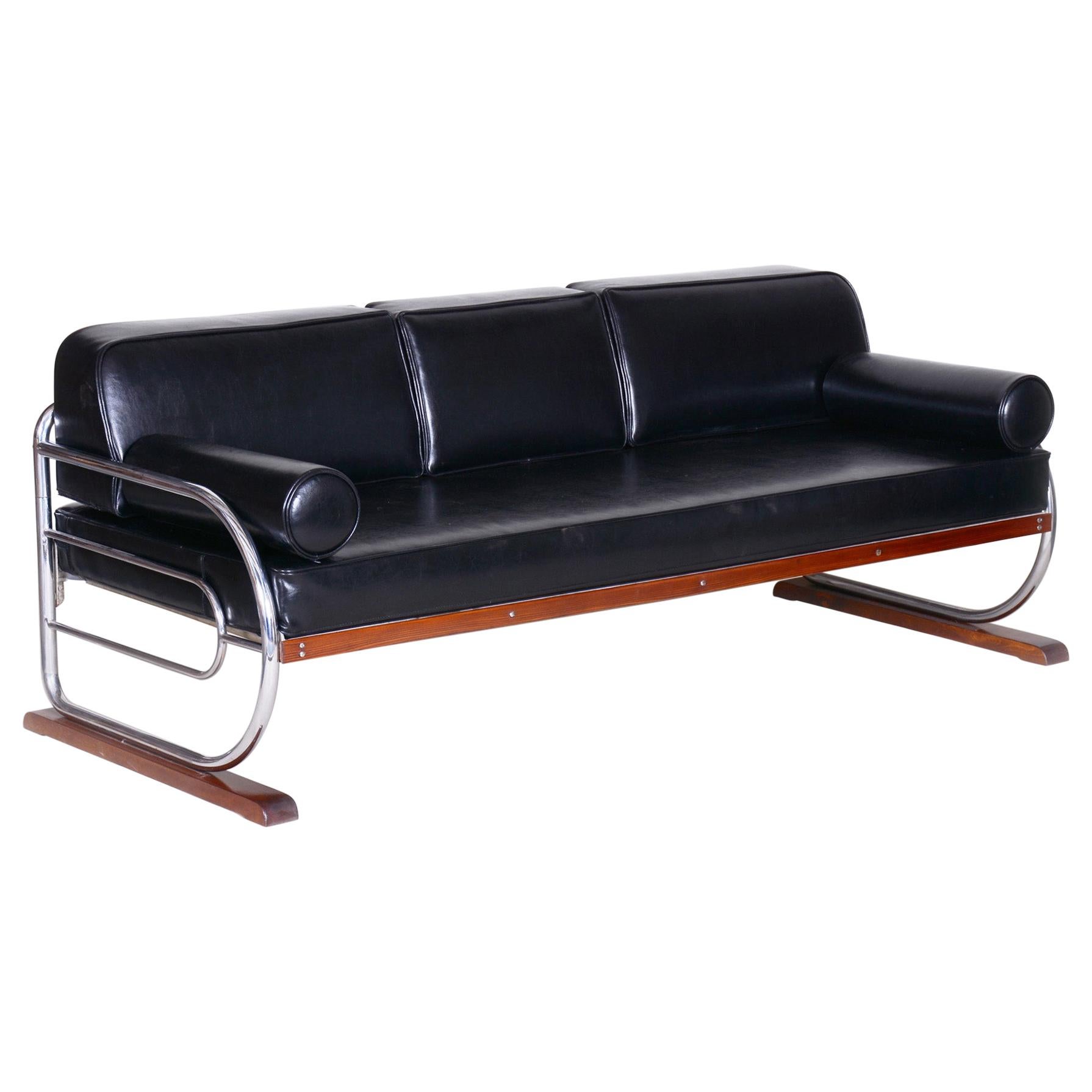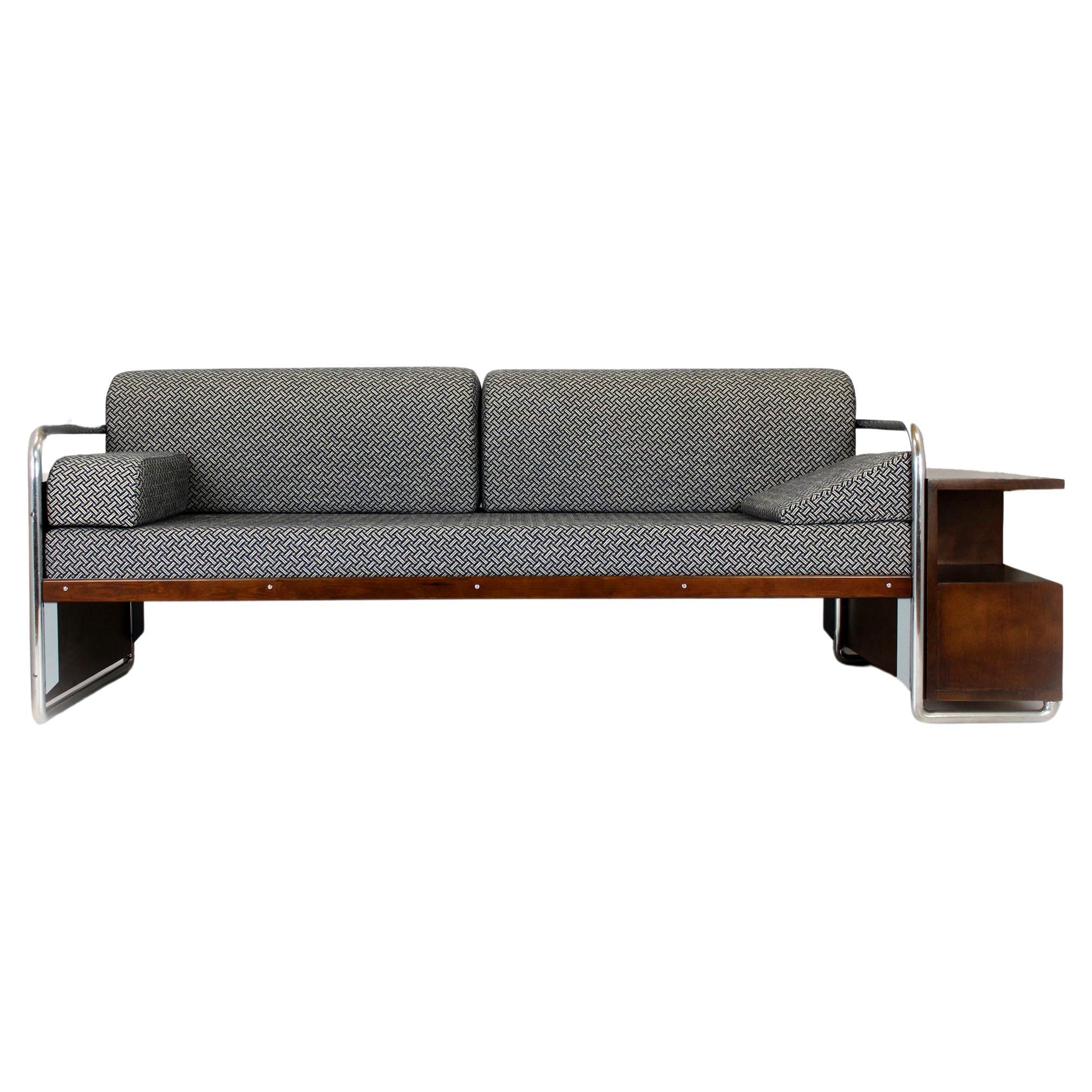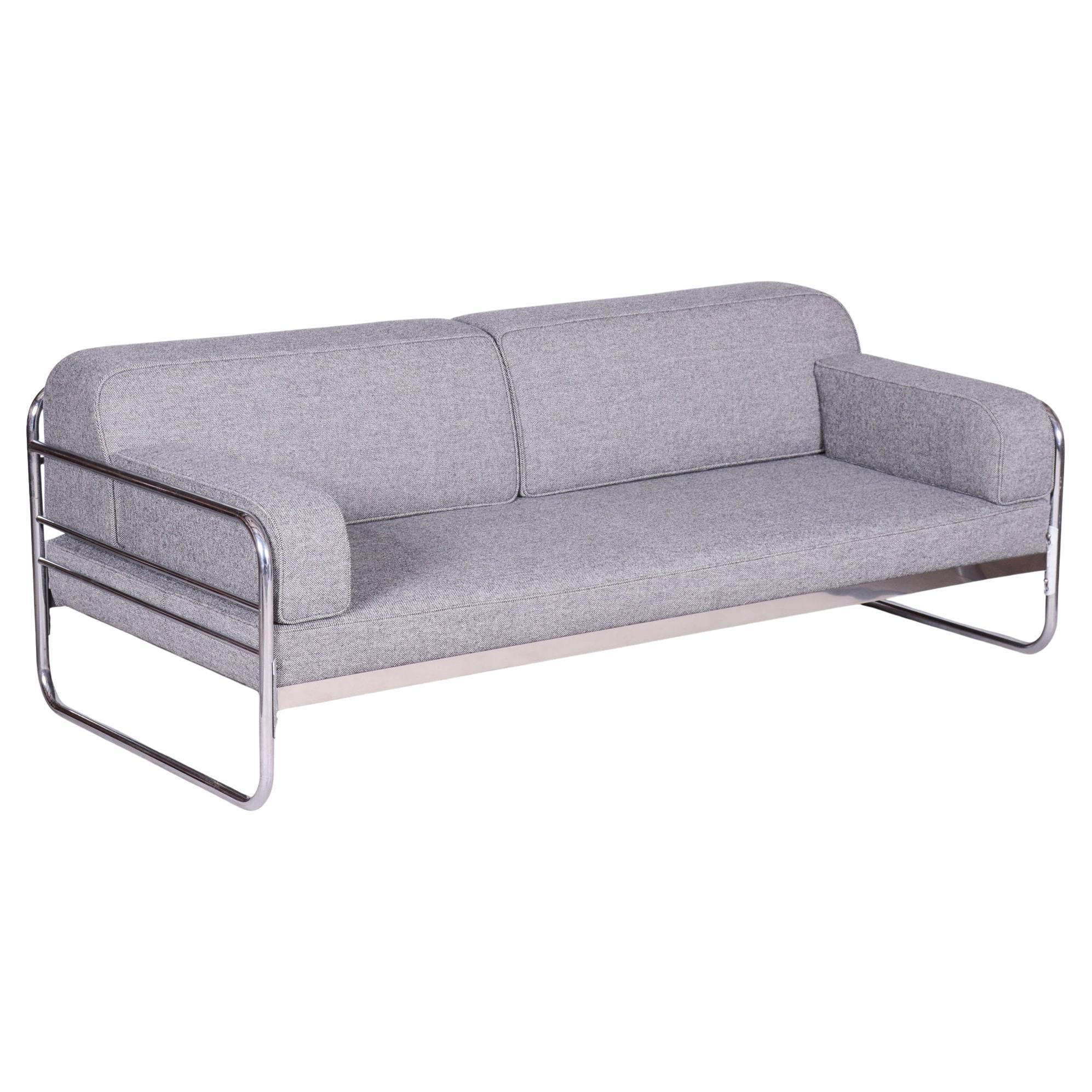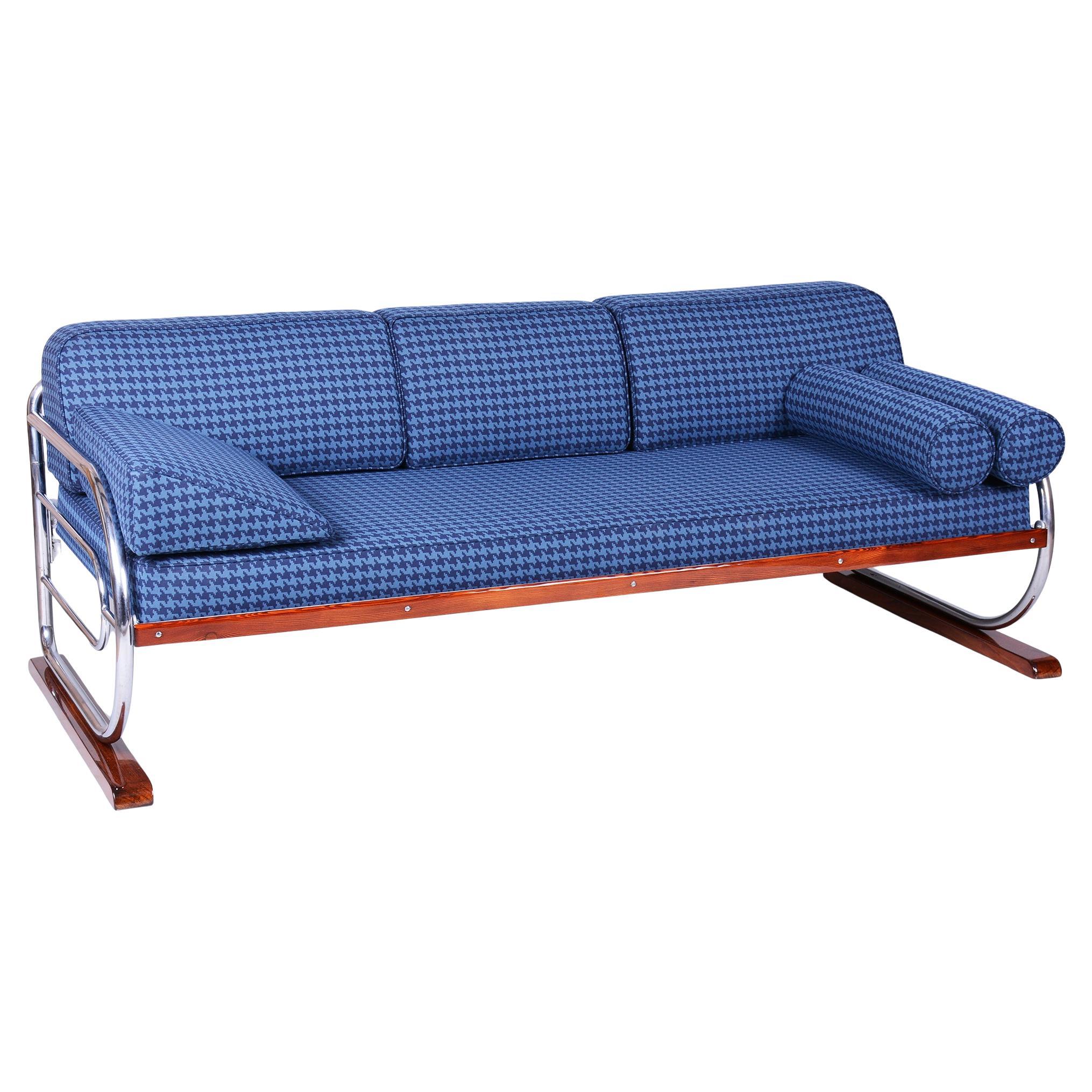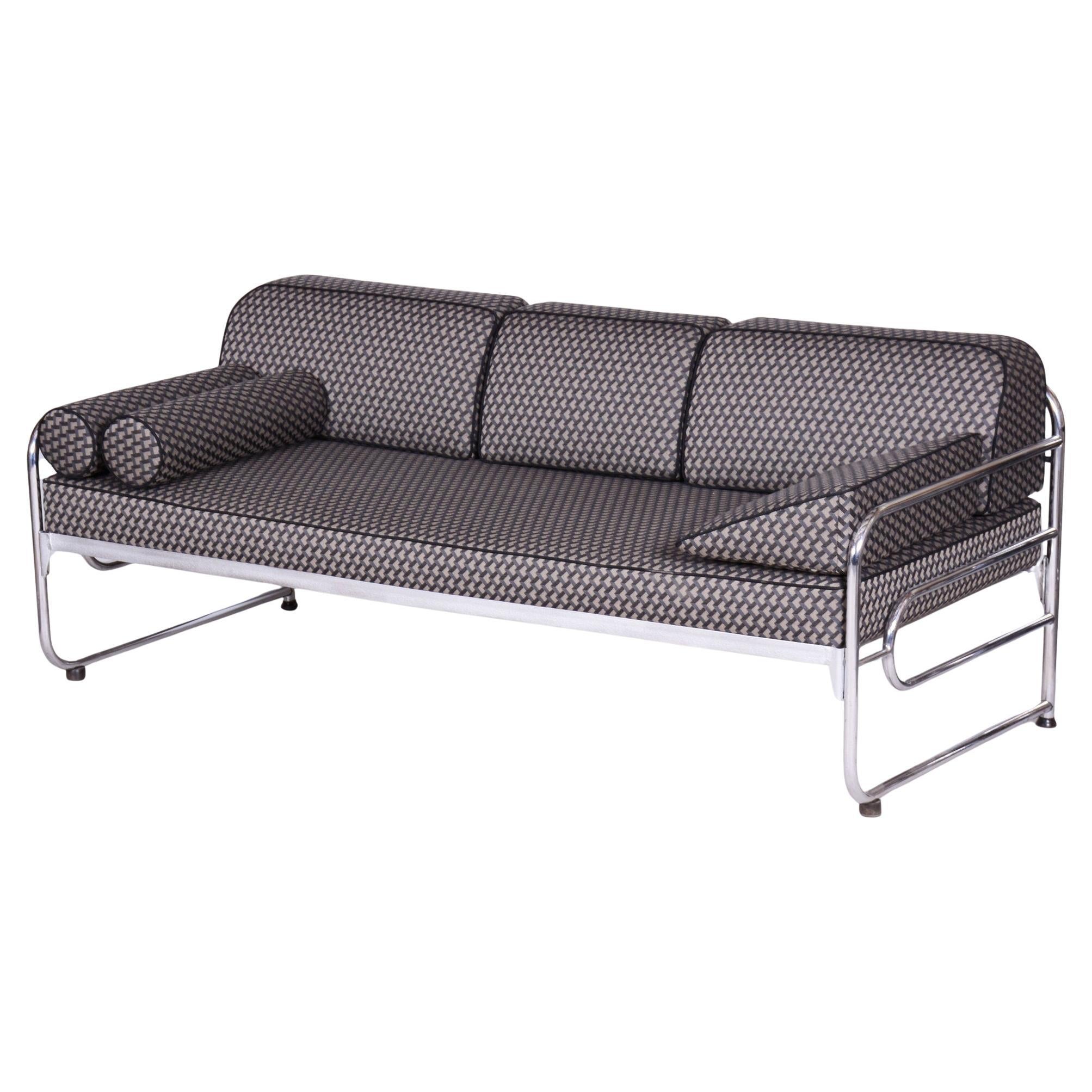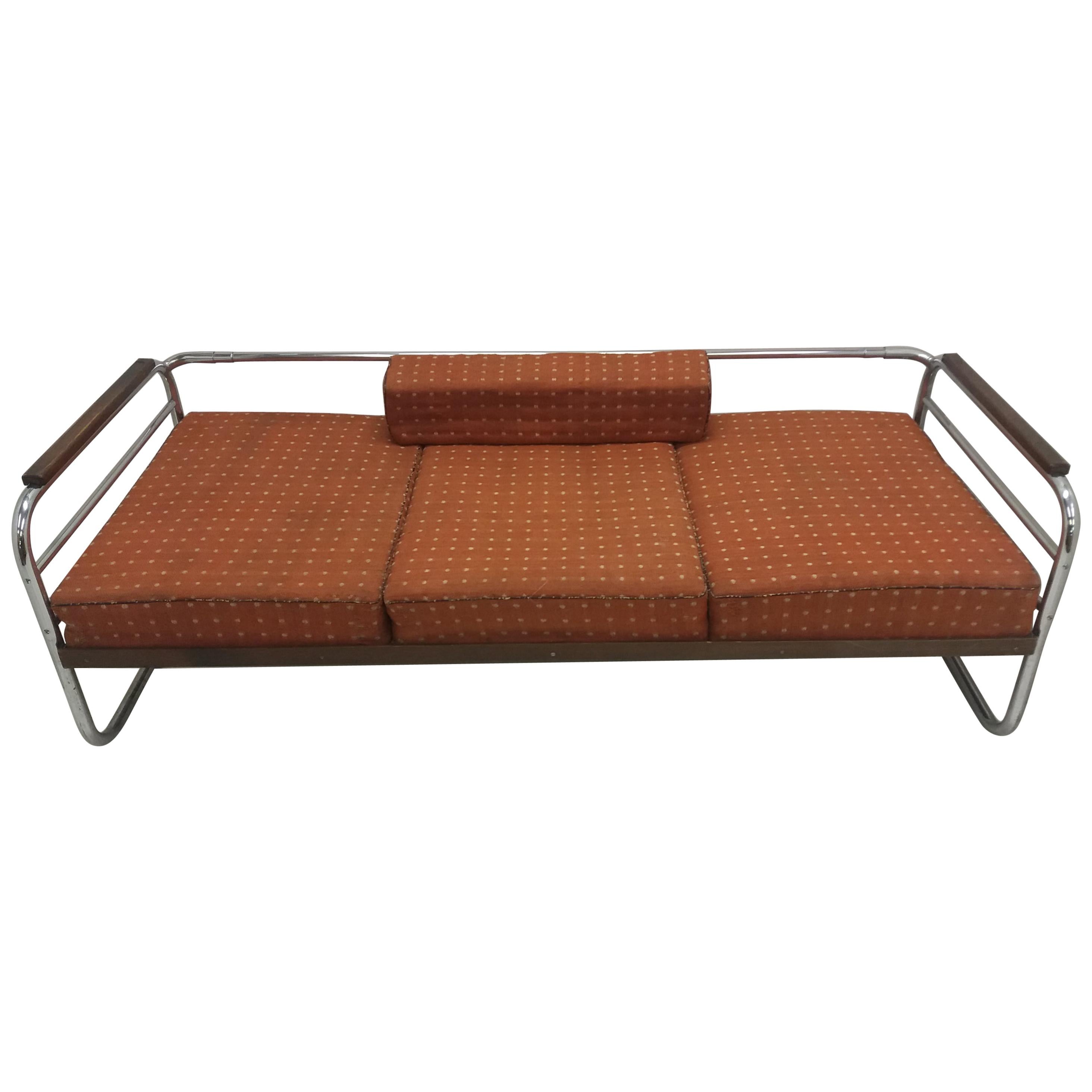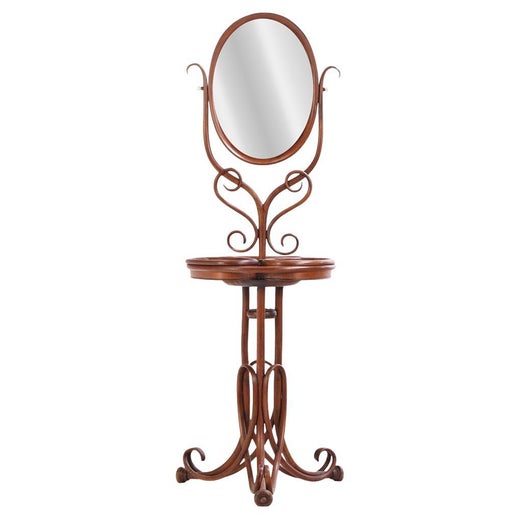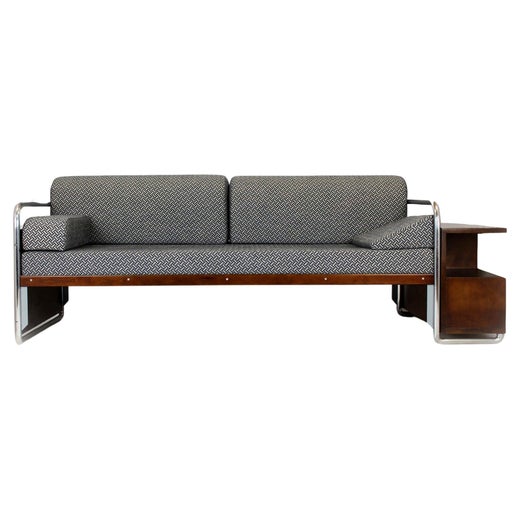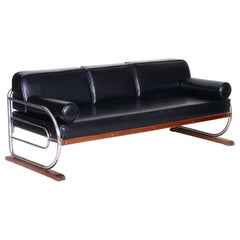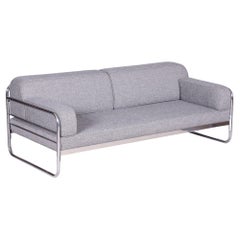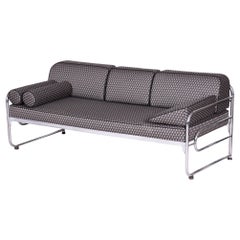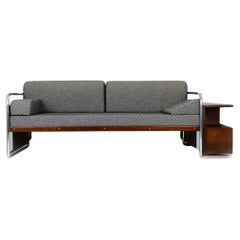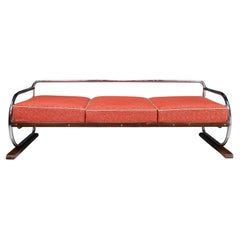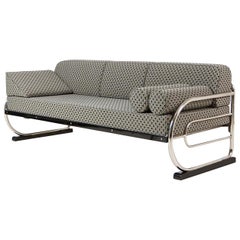Grey Bauhaus Sofa Made in 1930s Czechia by Robert Slezak, Designed by Thonet
About the Item
- Creator:Thonet (Designer),Robert Slezák (Maker)
- Dimensions:Height: 29.53 in (75 cm)Width: 76.78 in (195 cm)Depth: 33.47 in (85 cm)Seat Height: 16.54 in (42 cm)
- Style:Bauhaus (In the Style Of)
- Materials and Techniques:
- Place of Origin:
- Period:
- Date of Manufacture:1930-1939
- Condition:Reupholstered.
- Seller Location:Brandys nad Labem, CZ
- Reference Number:1stDibs: LU2641326283192
Thonet
For more than 180 years, Thonet — or Gebrüder Thonet — has produced elegant and durable tables and cabinets as well as chairs, stools and other seating that wholly blur the lines between art and design. Widely known as a trailblazer in the use of bentwood in furniture, the European manufacturer has reimagined the places in which we gather.
Noted for his skill in parquetry, German-Austrian company founder Michael Thonet received an invitation from Austrian Chancellor Prince Metternich to contribute Neo-Rococo interiors to the Liechtenstein City Palace in Vienna. The Boppard-born Thonet had honed his carpentry skills in his father’s workshop, where he carried out experiments with plywood and modified the Biedermeier chairs that populated the studio.
Thonet’s work for the chancellor raised his profile, and the cabinetmaker gained international recognition, including at London’s Great Exhibition of 1851, which featured works created by members of the Arts and Crafts movement as well as industrial products of the day. Thonet showed a range of furniture at the fair and won the bronze medal for his bentwood chairs. He incorporated his family’s company, the Thonet Brothers, with his sons in 1853.
Bentwood furniture dates as far back as the Middle Ages, but it is the 19th-century cabinetmaker Thonet who is most often associated with this now-classic technique. Thonet in 1856 patented a method for bending solid wood through the use of steam, and from there, the bentwood look skyrocketed to furniture fame. The works of renowned mid-century modern designers such as Alvar Aalto, Arne Jacobsen, and Charles and Ray Eames that put this technological advancement to use would not be as extensive or celebrated were it not for the efforts of the pioneering Thonet.
Considered the world’s oldest mass-produced chair, Michael Thonet’s ubiquitous Chair No. 14 demonstrated that his patented bentwood technology made it possible to efficiently produce furniture on an industrial scale. Now known as the 214, it won the German Sustainability Award Design for 2021, a recognition of the company’s commitment to environmentally responsible production.
Often called the Coffee House chair — the company’s first substantial order was for a Viennese coffeehouse — the No. 14 remains an icon. Thonet originally designed the chair in 1859, and it is considered the starting point for modern furniture.
The bentwood process opened doors — there were investments in machinery and new industrial processes, and the business began mass-producing furniture. By the end of the 1850s, there were additional Thonet workshops in Eastern Europe and hundreds of employees. Michael Thonet’s reputation attracted the attention of notable architects including Otto Wagner, Marcel Breuer and Ludwig Mies van der Rohe.
The No. 14 was followed by the No. 18, or the Bistro chair, in 1867, and the 209, or the Architect’s chair, of which Le Corbusier was a fan. (The influential Swiss-French architect and designer used Thonet furniture in his Pavillon de l’Esprit Nouveau at the 1925 International Exposition of Decorative Arts in Paris.)
Thonet’s chair designs also appeared in artwork by Toulouse-Lautrec, John Sloan and Henri Matisse in his Interior with a Violin Case. The noteworthy Thonet rocking chair remains a marvel of construction — in the middle of the 19th century, Michael produced a series of rockers in which the different curved parts were integrated into fluid, sinuous wholes. Thanks to Thonet, the humble rocker acquired something unexpected: style. It was captured in the paintings of Pablo Picasso, Pierre-Auguste Renoir and James Tissot.
Thonet is currently split into global divisions. Thonet Industries U.S.A. was acquired in 1987 by Shelby Williams and joined the CF Group in 1999, while the Thonet brand in Germany is owned by Thonet GmbH.
Find a collection of antique Thonet furniture on 1stDibs.
Robert Slezák
Best known for his sleek, Bauhaus style, designer Robert Slezák was a pioneer in the manufacturing of chrome and bent-metal furniture during the early 20th century.
Born in the town of Bystřice pod Hostýnem in today’s Czech Republic, Slezák originally trained as a locksmith and in 1908 established a locksmith’s workshop in his hometown. What began as a small business providing common locksmith products grew into the Slezák Factory, which made brass fittings for furniture and buildings. In 1911, Slezák became one of the first manufacturers in Europe to use a galvanic coating of copper, chromium and nickel on the surface of his products.
Starting in 1913, Slezák focused on designing and producing brass and metal furniture with wood accents, like chairs, beds and tables. By the 1930s, Slezák’s furniture style began to evolve towards mid-century modern and Bauhaus design, leading to streamlined and tubular three-seat sofas, stools, bent-metal chairs, wood and chrome coffee tables, desks, lighting and cabinets. During this time, Slezák also collaborated with the Czech furniture company Ton N.P. Bystřice pod Hostýnem on pieces including his Bauhaus chrome and walnut side table.
After 1948, Slezák’s firm became part of the Kovona furniture-making company, which continued to produce and recreate Slezák’s designs from the 1950s to the 1980s. Since 1992, the Czech furniture manufacturer has been known as Kovonax.
Today, Slezák’s designs remain highly sought after by interior designers and collectors of mid-century and Bauhaus furniture.
On 1stDibs, find a range of vintage Robert Slezák seating, tables, lighting and more.
- ShippingRetrieving quote...Shipping from: Brandýs nad Labem, Czech Republic
- Return Policy
More From This Seller
View All20th Century Czech Bauhaus Sofas
Chrome
Early 20th Century Czech Bauhaus Sofas
Chrome, Steel
Early 20th Century Czech Bauhaus Sofas
Steel, Chrome
20th Century Czech Bauhaus Sofas
Chrome, Steel
Early 20th Century Czech Bauhaus Sofas
Steel, Chrome
20th Century Czech Bauhaus Sofas
Chrome
You May Also Like
Early 20th Century Bauhaus Sofas
Steel, Chrome
Vintage 1940s Czech Mid-Century Modern Sofas
Chrome
Vintage 1930s Czech Bauhaus Sofas
Chrome
Vintage 1930s German Art Deco Sofas
Steel, Chrome
Vintage 1960s Italian Mid-Century Modern Sofas
Fabric, Wood
Vintage 1950s Danish Mid-Century Modern Sofas
Steel
